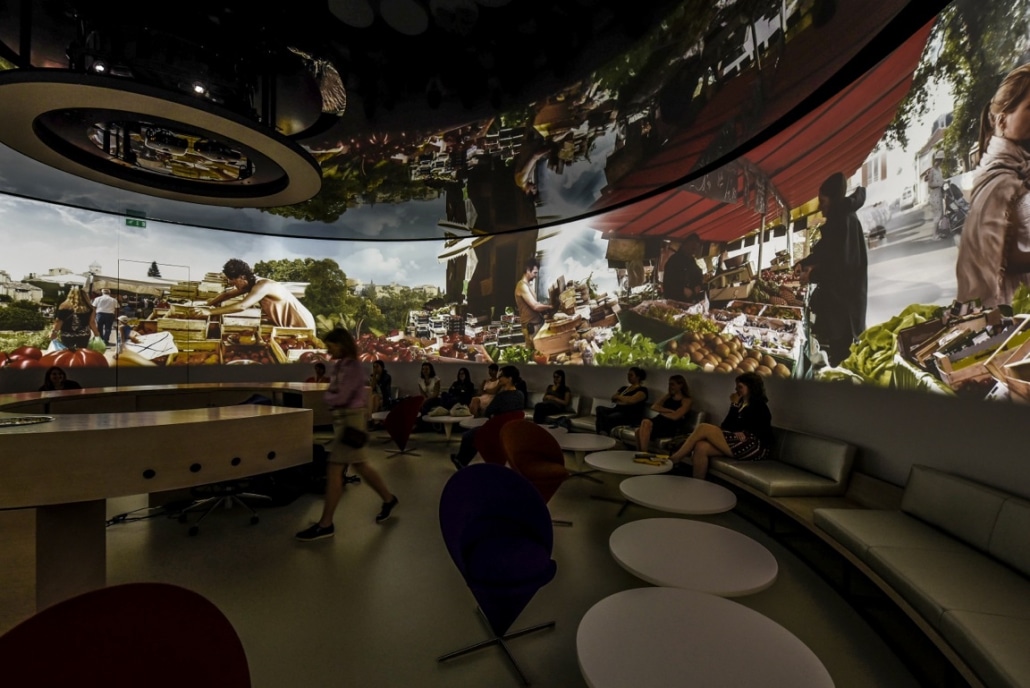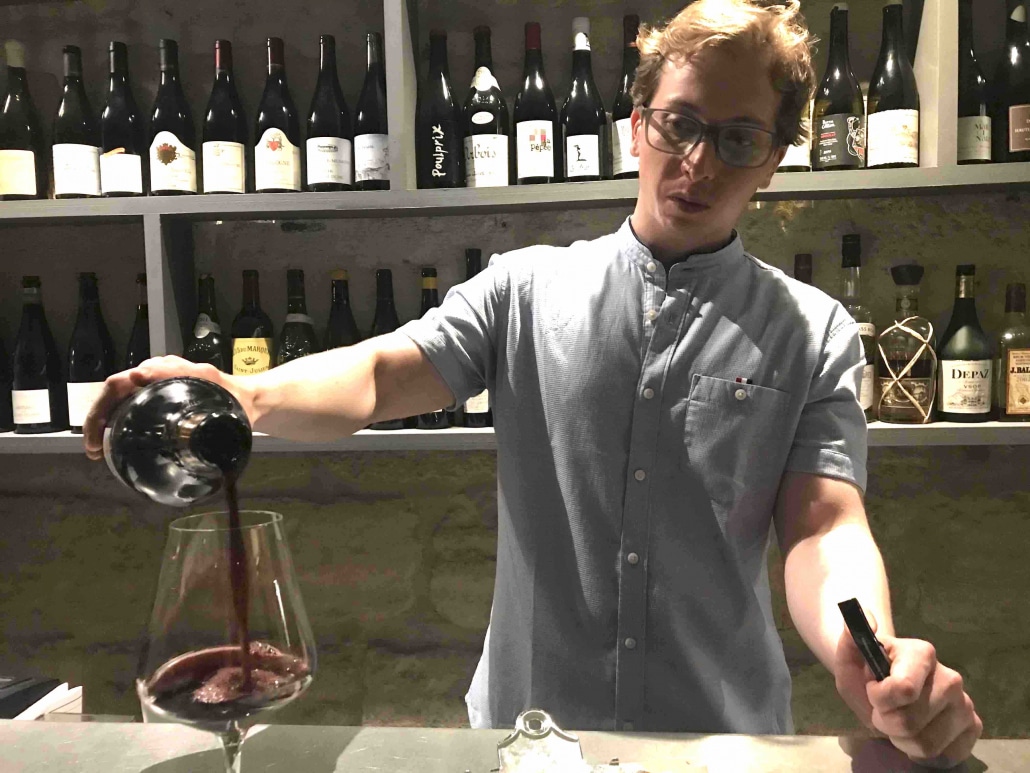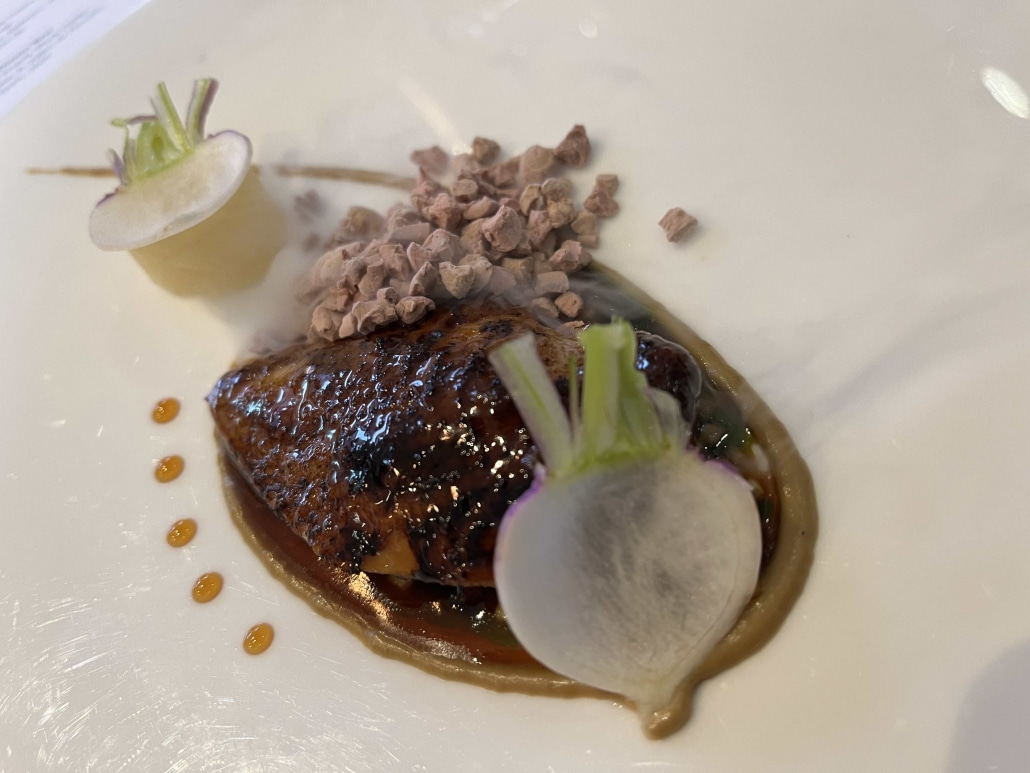My wife is aiming for a new Kindle for Christmas. Helping to save trees. While I’m dreaming of a couple of fat tomes to occupy my stocking. Maybe not on the topics this website centres on. I’m not averse to fiction or books on German history. Hint.
Lockdowns saw me researching into some recherché culinary roads less travelled, hence of late I’ve purchased fewer new publications. So don’t expect any definitive overview from the 2021 suggestions below. Still much delight. In compiling my list I realised I had bookended it with two authors who have been with me most of my post-Beano reading life. Let’s salute two octogenarians who are the greatest living exemplars in their field – food scholar Claudia Roden, 85, and travel writer Colin Thubron, 82, both of whose books this year transcended all those feeble potboilers piled high around them.
Med: A Cookbook by Claudia Roden (Ebury, £28)
On the cover of Roden’s first new book in a decade there’s praise from Yotam Ottolenghi: “To read Claudia is to sit at her table, with everything, simply, as it should be. Pull up a table for the food; stay at the table for the stories.” The author herself begins what is much more than a recipe book with the epigraph “Cooking is the landscape in a saucepan”. All of which neatly sums up the fault line, dotted with hummus, tabbouleh, baba ganoush and a 1001 other treats, that lead from her groundbreaking A Book of Middle Eastern Food (1969) to the post-Millennium dinner parties inspired by her disciple Ottolenghi’s own oeuvre.
The Med reflects the fact that she has never rested on her scholarly laurels. Egyptian-born with Sephardic Jewish roots, Roden tapped into Spain with her last book, arguably my favourite of hers, and her latest offers a distillation of all her magpie-like culinary excavations radiating from the Mediterranean shores. Travel to Gaziantep, a Turkish city on the border with Syria via a green olive, walnut and pomegranate salad or investigate her pumpkin soup with orzo and amaretti, finding a new use for the traditional pasta filling of Mantua in Northern Italy. All this accompanied by evocative, anecdotal detail ranging from early family life in Aleppo via exile to Britain to the contemporary culinary mores of Barcelona.
Ripe Figs: Recipes From The Eastern Mediterranean by Yasmin Khan (Bloomsbury, £26)
Claudia Roden us a hard act to follow but many cookery writers have mined that rich Mediterranean/Middle Eastern seam. I’ve been a huge fan of Yasmin Khan since her debut, The Saffron Tales (2016), which is as much about charting the lives of contemporary Iranians as their exquisite cuisine. Its successor, Zaytoun, inpected Palestinian food through an acutely political lens as she journeyed through kitchens in Israel, the West Bank and the Gaza Strip. Raised in Birmingham, the child of a Pakistani father and Iranian mother, she initially worked as a human rights activist. This is fully evident again if you look behind the handsomely illustrated pages of her third cookbook. It covers the food of Greece, Turkey and Cyprus with a set mission – to explore how migration has shaped cultures for the better… with food a vital litmus test.
Hence Ripe Figs is filled with the stories and recipes from families that have lived in the region for generations but alongside, in the midst of the global refugee crisis, she finds positive contributions from the displaced in the Moria refugee camp on Lesvos and elsewhere. In Istanbul kitchens she cooks with Kurds and in Northern Cyprus explores the thorny British colonial legacy. Fascinating reportage but the book is also a trove of sun-filled recipes that celebrate how the joy of food can bring us all together.
Sicilia: A Love Letter to Sicily by Ben Tish (Bloomsbury, £26)
Food and joy to me are synonymous with Sicily. Well maybe not gagging on spleen sandwiches from the street stalls of Palermo. I’m thinking proper tomatoes, lemons, capers, olive oil, ricotta salata, scaccia bread, cannoli and, of course, seafood. The image fronting this article is of the remarkable gambero rosso red prawns from the island’s South West Coast. These particular specimens were served to me with an orange dressing and thyme, in one of my final meals out before the first lockdown, at Norma in London’s Fitzrovia. This homage to Sicilian cuisine, with an inevitable Arabic influence, was created for the Stafford Collection by Ben Tish. In his matching ‘love letter’ he puts his own light stamp on a culinary melting pot of so many influences. It’s worth buying the book just for the pudding recipes.
An A-Z of Pasta by Rachel Roddy (Fig Tree, £25)
Subtitled ‘Stories, Shapes, Sauces, Recipes’, this is an alphabetical exploration of the quintessential Italian food from the Rome-based home cook, whose evocative despatches appear in The Guardian every Saturday. Does it supersede my super-stylish long-standing pasta primer, The Geometry of Pasta by Caz Hildebrand and Jacob Kenedy (of Bocca di Lupo fame)? Neither can do full justice to the full range of Italian pasta shapes, estimated at over 500. She tackles 50, subdivided into six main categories, with 100 accompanying recipes to justify her claim that “pasta shapes are edible hubs of information”. if that sounds daunting just check out the recipes, most of which are eminently accessible. Tagliolini with datterini tomatoes and chanterelles? Or fresh capelli d’angelo with prawns and lemon. Pass the parmigiano, per favore.
To complete my Italian ‘course’ I’d like to recommend the pasta-driven Taste: My Life Through Food by Stanley Tucci (Fig Tree, £20), but this eagerly anticipated prezzie is still being loaded up at Santa’s Lapland HQ, I’m hoping. There’ll be hell to pay if I’m not tucking into the Big Night star’s comestible memoir amid the messy aftermath of a roast goose dinner.
A Cook’s Book by Nigel Slater (4th Estate, £30)
What’s not to like about chapters entitled ‘Sometimes You Just Want Pie’ or ‘The Stillness of Cheesecake’? Slater’s Observer column readers, he tells us, didn’t want prunes in a chicken and leek pie, so he has left them out for this book of 200 tried and tested recipes, which plays to his strength – a close kinship with his readers. As the title implies, he is a cook, not a chef. As home-based as his near namesake Nigella, he does not share her ease on telly. Still he writes like a cosy angel, drawing you into the foodie diary of his life. Think Alan Bennett with a well-stocked pantry. The Stillness of Cheesecake may read like a riff on Milan Kundera (The Unbearable Lightness of Soufflés, anyone?) but it offers the homeliest of advice, too, alongside a slavering appreciation of food kept simple. And I quote: “A slice of cheesecake arrives on a small white plate. Cool, calm, silent. A sour whiff of buttermilk, the caramel sweetness of vanilla, Your fork slides through with barely a sigh.
“The sweet, fudgy filling can cloy after a mouthful. This pale and graceful pastry needs a pot of jam or fruit to waken it, and us, from its vanilla-scented slumber. A tart fruit compote will work – gooseberry, plum or apricot – or a little mound of baked rhubarb at its side.”
No space to digress into his discovery in San Sebastian of Basque cheesecake. Never been a huge fan of this over-praised pud, but Slater’s advocacy makes me want to attempt it again.
The Beer Bible by Jeff Alworth, 2nd Edition (Workman, £30, also available in pb)
Beer really is more my thing than cheesecake and the ideal Christmas present for the ale lover in your life has to be this revised version of Alworth’s award-winning magnum opus, first published in 2015. Six years is a long time in the rapidly evolving world of craft beer and the Portland Oregon-based Beervana blogger has been perfectly placed to chart it. Take Manchester’s iconic Cloudwater Brewing – they were just starting out in 2015, fuelled by co-founder Paul Jones’ learning expedition to the American West Coast where Alworth mentored him in the hop-driven scene.
Now Cloudwater merits four pages in this massive, comprehensive work of reference that still has that personal touch in its appreciation of the world’s vast array of beer cultures. Even sake gets a look in this time round. What I particularly like about the book is its even-handedness, giving space to understand how mass market lagers might appeal. Manchester, too, is not just about Cloudwater and Marble (young head brewer Joe Ince makes the index) but traditional family brewers Hydes, Robinsons and JW Lees are also hailed.
Modern British Beer by Matthew Curtis (CAMRA Books, £15.99pb)
Another acclaimed beer writer liked Manchester so much he moved here permanently. Just after publication this autumn I met the LIncoln-raised writer/photographer at the Sadler’s Cat bar in the city centreto discuss its genesis – in a blog born out of a Damascene conversion to beer in Colorado a decade ago. In my interview/review I wrote: “New wave UK beer writers have codified the global beer styles that have been clarified/reinvented across America and then taken up over here. Matthew Curtis goes a step further and charts the creative melting pot of our own mash tuns and barrel ageing projects. Modern British Beer proves we are not just brewing lackeys; our own cask ale traditions remain the envy of the world, our own innovations the equal of anywhere.”
The Curtis format certainly does the contemporary UK beer scene justice. The book is divided into seven regions with up to 15 breweries from each profiled via a defining beer style. It has already sparked a number of thirst-quenching pilgrimages. Check out this one to Sheffield’s St Mars of the Desert.
Modern British Cider by Gabe Cook (CAMRA Books, £15.99pb
On the surface a companion volume to MMB and, by chance I also spent a fascinating day in the company of its author. the self-styled ‘Ciderologist’. Not in a bar this time but in the orchards of Dunham Press Cider, a northern outpost of a drink more associated with Somerset and Herefordshire. Later that day, at a tasting at GRUB in Manchester I even encountered a Scottish cider among a remarkable variety of styles.
In my subsequent report I wrote: “Rather than an artisan polemic, Modern British Cider is a careful summation that makes you want to sample all the delights he flags up in ‘The Most influential British Cider Makers Today’ chapter. In particular, to consider the contrasts between West Counties and East Counties, ie. made from tannic bittersweet cider apple varieties on the one hand and from fresher, fruitier dessert and culinary specimens on the other.”
So is all lovely in the orchard? The book is a fine gazetteer of where to find the good stuff but doesn’t fight shy of confronting the challenges for a tipple saddled with tarnished perceptions from the past. And, of course innovative ‘new wave cider’ has its own responsibility to its traditions. My Christmas suggestion – order this book and maybe treat yourself to a fine Pomona or Oliver cider to accompany your turkey or (apple-stuffed) goose.
A Cheesemonger’s Compendium of British and Irish Cheese by Ned Palmer (Profile, £14.99)
Cider, like beer, is a great accompaniment to cheese. And we’re not talking the token Christmas Stilton here. In 2014 Ned Palmer, schooled at Neal’s Yard Dairy, set up the Cheese Tasting Company to proselytise about the golden age of British cheese (it’s now). Two years ago his A Cheesemonger’s History of the British Isles beguilingly explored the artisan wonders at hand and the doughty makers who provide us with an alternative to the slabs of pap that dominate the supermarket shelves. A rollicking read from Ned but this follow-up is the book to slip in your pocket as you seek out a Baron Bigod or a Stinking Bishop or ask to compare a Montgomery Cheddar with a Keen’s Mature. It codifies, via style (mould-ripened, blue, washed rind, hard etc) 158 native cheeses, one to each page with a drawing and a succinct story and tasting note. Highly recommended. Next move is find a good cheese shop. I’m lucky enough to have the outstanding Calder Cheesehouse just a 10 minute walk away in our little mill town of Todmorden. They do online, too. Visit this link. There’s still time before Christmas.
Wines of the Rhône by Matt Walls (Infinite Ideas, £30)
Early in 2021 I caught up with last year’s Noble Rot: Wine From Another Galaxy. I’d been reluctant to join Dan Keeling and Mark Andrew on their ebullient adventures since I’d already read some of them in their Noble Rot magazine. They’ve been busy boys this year too, opening a second Noble Rot restaurant, in the old Gay Hussar site in Soho and wine retail website, Shrine to the Vine. In prose, they have their finger on the pulse of the contemporary wine scene, opening up new paths.
Less showy is the Infinite Ideas Classic Wine Library, sparsely illustrated, hugely comprehensive survey of countries or key regions, often written by experts with MW after their name. Matt Walls isn’t a Master of Wine but he is Contributing Editor to Decanter magazine, who uprooted his family to a village outside Avignon fo a couple of years In order to really get under the skin of France’s Rhône region, North and South. The result is a revelatory delight, a reference work full of wise judgements. As up to date as it gets and an inspiration for our Christmas dinner wine offering.
The Amur River by Colin Thubron (Chatto & Windus, £20)
It’s a truism that there is nowhere left on the planet to discover, making it increasingly difficult for travel writers to push the boundaries. Well, veteran explorer Colin Thubron, in his 83rd year, is not one to settle for the ‘we’re all tourists now’ get-out clause. Before reading this – in one transfixed sitting – I couldn’t pin the Amur on the map. Yet it is apparently the 10th longest river on earth, flowing 3,000 miles east from a secret source in the Mongolian mountains to the Tatar Strait. Thubron travels he entire length. What gives the book its tense socio-political edge is that much of the journey follows the highly fortified, much fought-over Russian-Chinese border.
In his quest to chart how the Russian imperial dream died Thubron’s fortitude is astonishing. Early in the trip traversing fathomless bogs at a frantic trot he falls from his squat, primitive nag and twists his ankle badly. Later he brazens out an arrest by the local police. What transcends any sense of mere derring-do is his grasp of the Amur’s tragic history and, of course, his luminous prose. Witness: “To walk here is to wade through a tide of wildflowers: multicoloured asters, gentians, butter-coloured potentilla, peacock-blue columbines. Over farther slopes, swathes of blown edelweiss make a frosty pallor for miles.”
I’ve followed Thubron from his early books on the Middle East through his eye-opening explorations of Russia and China, but this arguably is his elegiac masterpiece.





































































































































































